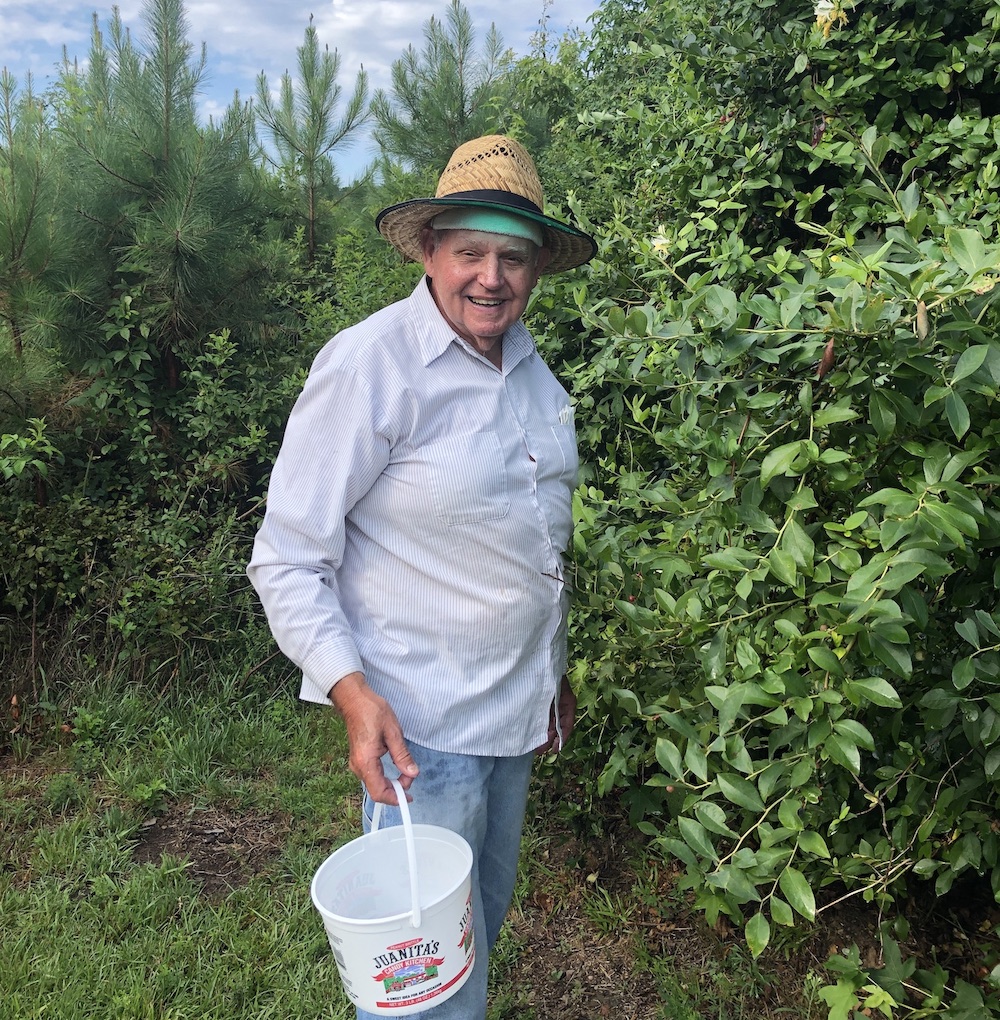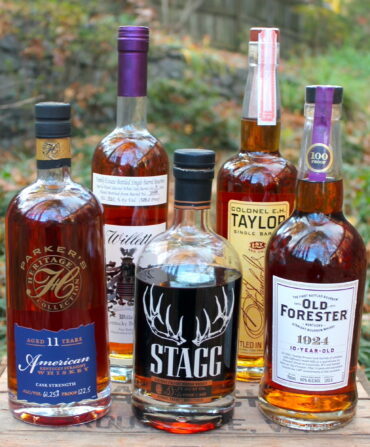Do not be deceived: Despite blueberries’ innocent appearance—each one perfectly round, in various shades of frosty blue—picking them is not for the faint of heart.
On any given day, I can still close my eyes and return to the patch of my childhood. I’m about ten years old, standing in the North Carolina sun, hot enough to melt the tar on the light pole that stood in the middle of the patch. My bare feet, dirty, my hands stained purple. My cousins are there, too, their faces already smeared with the juice, all of us filling our empty Neapolitan ice cream buckets with the tiny orbs so we could be granted parole from the relentless picking.
My grandmother, Mema as we called her, was an amateur botanist of sorts who spent hours poring over the Burpee seed catalog. To say that she had a green thumb would be kind of like saying that Michael Jordan could play a little basketball. She planted two large patches of blueberry shrubs on tracts of our family land in the Piedmont of Montgomery County more than fifty years ago, and they still produce gallons upon gallons of the fruit yearly.
During the course of that half-century my family has been picking on the property, the berries have been both a blessing and a curse, depending on the day and who’s asking. But I’m thankful for the lessons I learned in the patch that I now apply to pretty much every aspect of life.
Lesson One: Picking Requires Patience.
The fruit doesn’t always ripen when you want it to. Instead, it’s more random, like a Battleship game board, often with more misses than hits in each blueberry cluster. No matter how badly you want to fill a bucket with entire clusters, you have to pick and choose: The fruit can’t be rushed. The berries don’t care if it just rained, and you’re getting drenched, or if you have somewhere, anywhere, you want to be besides picking. They only ripen when they’re good and ready. Like most everything else in life, timing is everything.
Lesson Two: Don’t Pick Alone.
According to my daddy, any project, especially a tedious one like berry picking, is better when you have someone to help share the load. Daddy has related some of his most amusing stories while keeping us company in the patch, stories that never come up during family meals, like the time he raced another driver while he was courting my mama. Something about the blueberries loosens the lips. Companions don’t have to be limited to humans, mind you. Canines are particularly welcome. Probably a dozen or more dogs, mostly beagle mixes and Heinz 57 varieties, have meandered under the canopy of bushes along with us over the years, seeking shelter from the sun. Our most recent companion, Cooter, isn’t even ours, but don’t tell him that. He patrols the patch, on guard against sneaky copperheads with the dedication of a West Point sentry.

Lesson Three: Variety Is a Good Thing.
At the far end of our patch lie several bushes we call the “big blues.” There’s probably some scientific name for them, but we don’t really care about that. We all just want to get to those first because they are easier to pick for some reason, the ripe berries gently separating themselves from the stems almost effortlessly, the larger size of their fruit filling the buckets more quickly. I often wondered back then why my grandparents didn’t plant all “big blues”—wouldn’t that have been a sort of utopia? But years later, I learned that in order to flourish, a patch needs multiple varieties so the plants can cross-pollinate. Without a little diversity, a blueberry patch becomes stagnant.
Lesson Four: Look Below the Surface.
Inexperienced berry pickers grab only the fruit on the outer bits of the bushes, wasting the gobs of perfectly good berries that lie beneath. Experienced pickers know they’ll be rewarded if they dig deeper.
Lesson Five: Leave Some for the Birds.
Toward the end of the season, the berries don’t grow as big and plump, and the pickers are plumb worn out. Once you have what you need, it’s okay, even advisable, to leave some behind for others. (Including deer, rabbits, birds, and anyone else passing through.)
Lesson Six: Each Season Lasts Only a Little While.
At the time of picking, it seems like the bushes will be producing until the Rapture. But in reality, the season runs from about the middle of June until late July in our patch, when the Dog Days are just getting started. At that point God has mercy on us berry pickers, and says enough is enough, leaving the remaining green berries to dry up in the oppressive heat. Like a rainbow after a storm, it’s a reminder that we are only given what we can handle—but we also need to take advantage of the opportunities we’re given.
Today, the faces of the blueberry pickers have changed in our little patch, and I am reminded how truly short each season is. Gone are my granddaddy, with his pocketknife to cut back the honeysuckle, and my grandmother, who the red mites on the bushes never bothered. Now my daddy leads the way to the patch every other day, as dependable as clockwork, with his straw hat and one-gallon-plus-sized overachiever bucket. Despite the changes, the love of family—and the sweet rewards of cobblers, pies, jams, jellies, and yum yums—make the picking worthwhile.
Already picked your blueberries? Try one of Garden & Gun’s recipes that stars the fruit.








